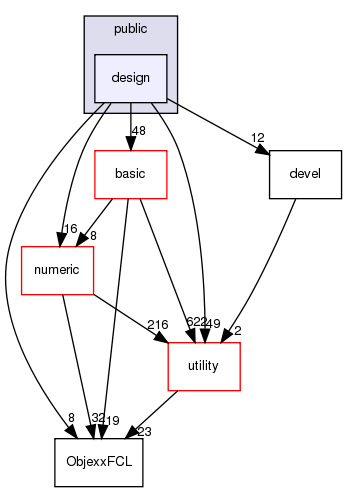 |
Rosetta
3.8
|
All Classes Namespaces Files Functions Variables Typedefs Enumerations Enumerator Friends Macros Pages
 |
Rosetta
3.8
|

Files | |
| file | beta_peptide_modeling.cc |
| file | fixbb.cc |
| Fixed backbone design. Can do side chain minimization after PackRotamers by using the flag -minimize_sidechains. This is SLOW. | |
| file | mpi_msd.cc |
| file | pmut_scan_parallel.cc |
| Main function for running the point mutant scan protocol. | |
| file | rna_design.cc |
| file | sequence_recovery.cc |
| A protocol which outputs sequence recovery statistics ala the table in the "Native sequences are close to optimal" paper. | |
| file | supercharge.cc |
| file | zinc1_homodimer_design.cc |
| Symmetric design of a zinc-mediated homodimer. One zinc at the interface. Gridsearch (or not) of perturbations to the metalsite geometry using rollmoves about axes that pass through zinc. Metalsite constraints are in place to allow backbone minimization of the designs. | |
| file | zinc1_homodimer_setup.cc |
| Grafts a 2-residue + zinc match onto the match's scaffold, duplicates the pose, then performs two discrete flips (rollmoves) to the second chain that generates a symmetric pose with a tetrahedral metal binding site. | |
| file | zinc2_homodimer_design.cc |
| Starts with an undesigned symmetric dimer with two interface zinc sites as created by zinc2_homodimer_design_setup, and designs the interface with sc, bb, and jump minimization. | |
| file | zinc2_homodimer_setup.cc |
| Stage 1 of designing a two-zinc metal seeded symmetric interface. | |
| file | zinc_heterodimer_design.cc |
| This is the application for a metal interface design project. In its initial conception, the idea was to design an interface between ankyrin and ubc12. First, RosettaMatch is used to design a histidine/cystine zinc binding site on ankyrin (3 residues). The fourth residue to coordinate a tetrahedral zinc then comes from ubc12 (present natively). This metal binding gets the interface going; the protocol searches rigid-body space to try to find a shape-complementary interaction and then designs the interface. | |
 1.8.7
1.8.7